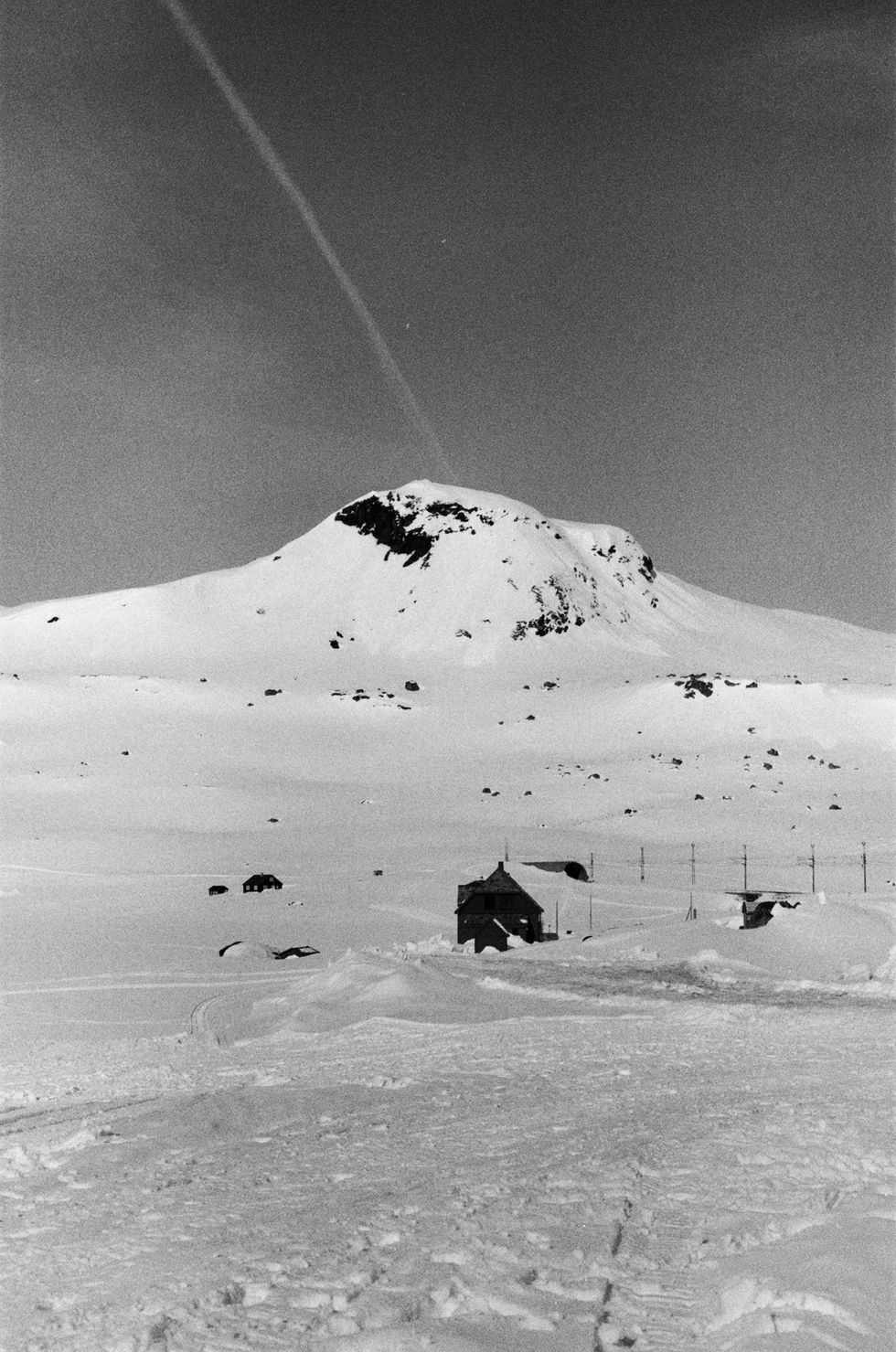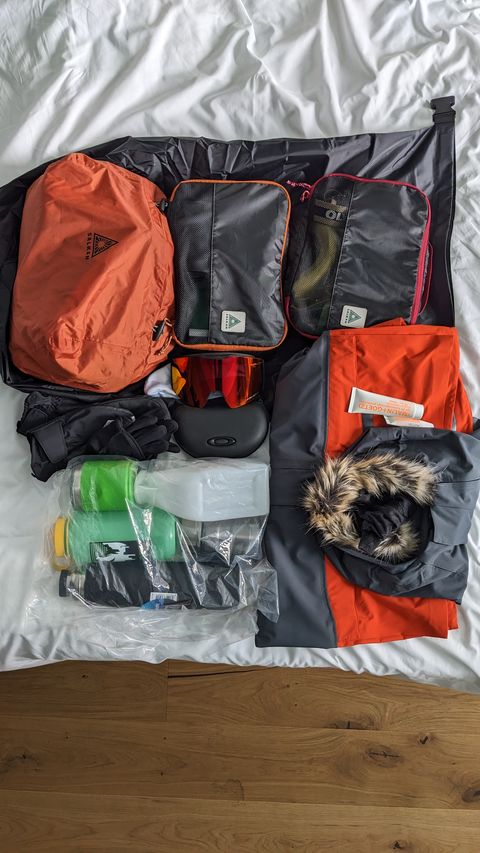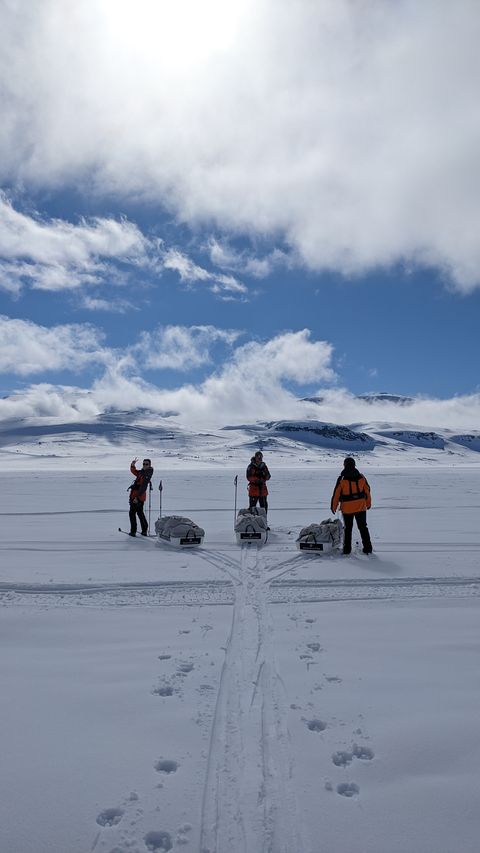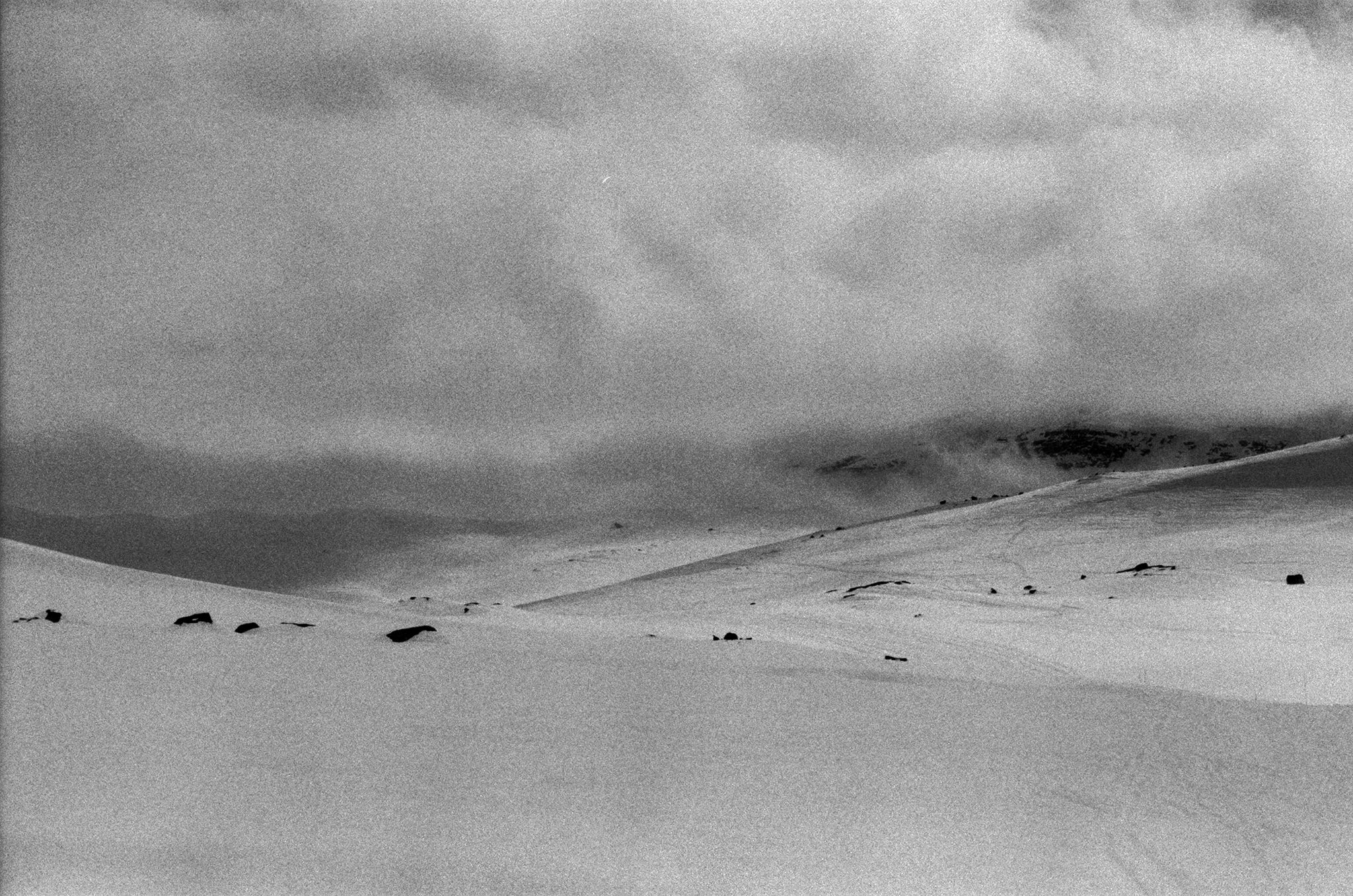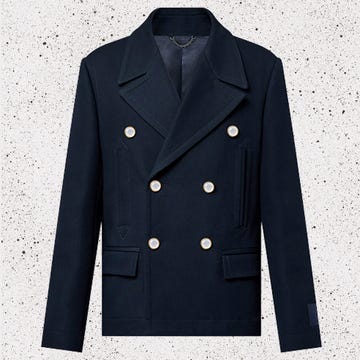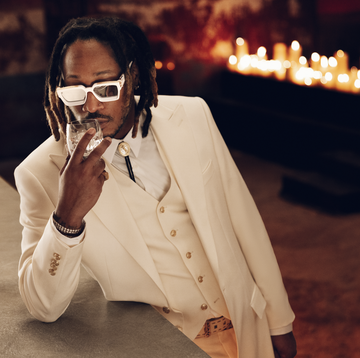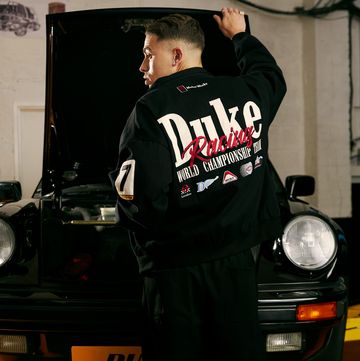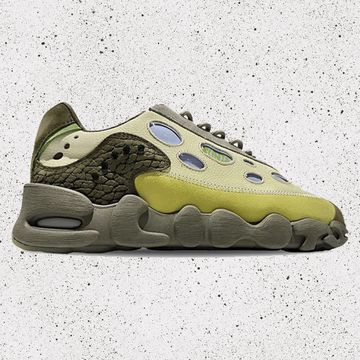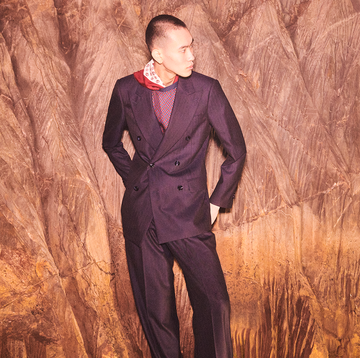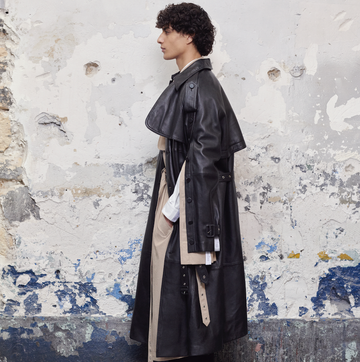Suddenly, just before Ustaoset, we erupt from a dark tunnel onto a white ocean flecked with petrified trees, shadowy fissures and squat little buildings long shuttered for the winter. It is March, and we have been on the train from Oslo for almost 4 hours. Earlier, spring was springing and snow lay clumped in defeated ribbons in the furrows of fields, but low plains gave over to high cliffs and fjordic bodies of water, and now the land is meaner, more mountainous. And blanketed in snow. The light is steadily fading as we barrel toward the isolated village of Finse, like we need to get there before this great marshmallow swallows us whole.
Accessible only by train, Finse, in Norway’s Vestland county, has been something of a spiritual home for polar exploration and snowbound derring-do for well over a century. For as long as men – and it has almost always been men – have needed to conquer the earth’s coldest, harshest places, simply because they are there. It’s where (Captain Robert Falcon) Scott and (Roald) Amundsen trained for and planned their various expeditions to the South Pole in the heroic age of Antarctic Exploration at the turn of the 20th Century, and where today’s polar adventurers come to get their spurs before, say, a crossing of Greenland or a race to the North Pole.
I am here to sample the tiniest morsel of polar hardship, courtesy of Shackleton, a British apparel and expedition-experience brand founded in 2016 by Martin Brooks and Ian Holdcroft, and named in honour of the great Anglo-Irish explorer, Sir Ernest Shackleton.
The pair were never adventurers themselves, though they do embody something of a modern day archetype: the executive explorer, high flying people that want to conquer nature (and their own limits) as they have the corporate world. “Ian has a passion for endurance sports,” says Brooks on the Shackleton website, “he has, amongst other things, run across Chile's Atacama Desert and rowed the Atlantic. I have a lifelong love of the sea and long-distance, transoceanic sailing. So we were living in Sir Ernest’s lengthening shadow years before we started this business.”
Brooks is not in Finse when we arrive, but Holdcroft is on the platform, ready to greet us off the train. He is stoic in the falling snow – shod in a thick wool jumper, with cropped hair and full Hemingway beard – and flanked by further members of the Shackleton team: Wendy Searle, the brand’s expedition manager and the seventh woman in history to ski solo to the South Pole; Jacob Myers, a young American working with/learning from the Shackleton team in preparation for his own tilt at the South Pole. (He aims to become the youngest person ever to do it.) And Louis Rudd MBE, an author, explorer, former SAS officer, record-breaking endurance athlete and Shackleton’s director of expeditions. And, as I would come to learn, something of a living deity in the world of polar endurance (and general hard-bastardry). We make our hellos and head inside.
The village radiates out from Hotel Finse 1222, which doubles as the train station. This low-slung, wood-panelled mega chalet was Scott, Amundsen and Shackleton’s shelter from the cold, though they may not recognise the heated boot room, the plush bar or the impeccable breakfast buffet. It wouldn’t look out of place in a soigné ski resort, let alone in the middle of the Norwegian nowhere.
We arrive in darkness so can only trust Rudd when, over a dinner of gravadlax, reindeer shanks and local pilsner, he says that the floor to ceiling windows afford stunning views out across lake Finsevatnet to the Blåisen glacier. Somewhere out there, George Lucas shot part of The Empire Strikes Back (1980; the scenes on the planet of ‘Hoth’), and as we eat, I can only hope that our trip won’t result in (or even loosely involve) the need to cut open a giant Tauntaun snow lizard and shelter in its viscera.
Brooks and Holdcroft met by chance in Greece in 2011. The former – founder and CEO of a digital marketing agency – had been a lifelong fan of Ernest Shackleton, with a photo of the explorer on his wall as a child. So when, on holiday, he saw the latter – a city trader with a passion for ultra-marathons – reading Race to the Pole: Tragedy, Heroism, and Scott's Antarctic Quest, Ranulph Fiennes’ book on Scott and Amundsen’s fabled rivalry, he felt compelled to interject. It turned out the pair lived streets away from each other in London and a friendship blossomed. Two years later, both men wanted out of their respective industries. “I wanted to do something that was much more clearly aligned with my interests and passions,” says Holdcroft, sat next to the very fireplace where the storied explorers once warmed their bones. “And so we got together and hatched a plan.”
The obvious starting point, Holdcroft says, was apparel. On expedition, Ernest Shackleton wore clothes cut from gabardine, a weatherproof fabric invented by Thomas Burberry in the late 1800s. And that link to British clothing – and later British luxury – seemed to provide a clear mandate for the Shackleton brand. “If you look at the apparel market,” explains Holdcroft, “there are two very clear areas: there’s the very much function-first, performance [area, such as] North Face, Patagonia. And there are fashion brands, with all the style and refinement. And we felt there was a big opportunity to combine those two elements.” He likens the Shackleton concept to that of the luxury 4X4 vehicle, which is rugged and capable without and sumptuously appointed within. The brand’s Escape Expedition down jacket is a distillation of the concept: sleek, low-profile, and garment-dyed in Italy (so far, so fashionable), but also impossibly warm and light, and crucially, tested in the field by real polar explorers. It also has a higher down content than its equivalent from The North Face (and costs £25 less).
Shackleton isn’t the only brand to be fusing the nebulous concepts of luxury and adventure. There have been high-end, sell-out collaborations including Gucci X North Face, Aimé Leon Dore X Diemme and Zegna X Norda, and Brunello Cucinelli recently unveiled its latest capsule collection of stealth-wealth skiwear. And super technical clothing, such as that of Arc’Teryx, Snow Peak, And Wander etc. has made the transfer from niche-expensive to mass-expensive. That is to say, it’s now cool to wear a £600 shell jacket designed for mountain exploration on the street. The techier the better, and it need never even see rain.
But Shackleton is one of only a handful of brands that have moved into the travel space, too. “It was always our ambition to offer experiences,” says Holdcroft. “Because not only then does it demonstrate to the consumer that we know what we're talking about when it comes to selling our product. It also means that we can give you the opportunity to wear our products whilst out in the extreme environment it’s designed for. As opposed to outside a bar in Soho on a cold night.”
Shackleton’s portfolio of challenges has gradually grown over the years, and now comprises a tiered selection, ranging from the Polar Skills Challenge (level one; open to all) to the Antarctica Coast-To-Pole Challenge (level five), which is only available to those with ‘a very high level of experience of ski-touring and cold-weather camping on multi-day trips.’ (Something you can accrue at levels 1-4.)
The Polar Skills Challenge – of which I’m doing a condensed version – comprises six days in Finse learning the basics of polar exploration, including cross-country skiing with a pulk (the sled containing all of your gear) and a night spent under canvas, far out in the snow. A spot on the next rotation will set you back £7000. The Coast-To-Pole Challenge lasts for two months, and price is on request. Meaning it is only for adventurers rich in both time and money.
In between, there are further polar tests, as well as Alpine skills itineraries, a five-day traverse of Iceland’s second largest glacier, and the brand hopes to offer jungle and desert itineraries at some point, too. Shackleton is a clothing brand, but the experiences are not just there to give it some kudos, says Holdcroft. These are not corporate away days, or something you gift an in-law. They are hard, and even at the entry level, endeavour to test your mettle.
“As a brand, we are for people that want to seek the path of most resistance in life,” Says Holdcroft, before quoting the Robert Browning poem etched onto the back of Ernest Shackleton’s gravestone that states, ‘I hold that man should strive to the uttermost for his life’s set prize.’ “We believe that everybody has that pioneering spirit within them and that it's for us, as a brand, to inspire people to do that.” Stirring stuff, given the setting. And that magnificent beard.
The next morning, Rudd is proven right. A high sun sits in a pure blue sky and the wide, frozen lake glares upward, a flat, frozen plain of brilliant white. On the far side, the snow slopes gently upward to the foot of a modest range of dark cliffs and the end of the glacier. Nothing wildly ominous, but they hint at a vast tundra beyond. And that’s where we’re heading, just as soon as we’ve breakfasted and been through all the kit. And there’s a lot of kit.
We get the full insight, from Merino underwear to nose-protectors. From advice on descending an incline with your pulk to tips on avoiding frostbite. Fully laden, the pulk, which is attached by just bungee cord and has no means of steering or stopping, will weigh around 20kg, and will endeavour to clean you out from behind at any incline. There is an anecdotal warning of the perils of ‘polar penis’, but it’s unlikely on such a short expedition. (Though not impossible…)
After lunch, we are led to the kit store to load up. I am wearing Shackleton’s new Challenger Expedition jacket, which Rudd has tested extensively in the field over the past couple of years, and represents a milestone for the company. The aforementioned ‘Expedition’ down jacket is top-spec, but it will most likely be worn on the touch line of a school football pitch. The Challenger jacket and matching salopettes, however, are designed for the most extreme conditions imaginable and at home in the persistent, aggressive cold of the Poles. The full outfit is available for £1690, and is overkill for anything other than a serious expedition. (Though that has never stopped men before.)
We continue to kit-up. I have one of the tents in my pulk, plus a stove and two days of freeze-dried meals, dry clothes, a sleeping bag and mat, a cache of selected junk food (my addition) and two flasks of boiling water, which we will decant, allow to cool, and drink.
The sled is heavy and I can’t ski. Something I only tell the guys as we’re about to leave. They seem unfazed, and in truth, it’s not really skiing. Each narrow blade is fitted with a ‘seal’ skin so it glides forward but sticks the snow when you push back, and the boot is only joined at the toe, so you can hike, essentially. Until you come to a descent, and then it all gets a bit spicy. (You can ‘pizza-slice’ to slow down as much as you want but you’re not properly clipped in, and touring skis don’t have much of an edge, so when that pulk comes steaming through, it’s goodnight Irene.)
The rest of the group are novices, too, and the Shackleton guys say many clients on the level one course can’t ski. We wobble down a gentle slope to the lake and trace out a wide, wonky circle to get used to the snow, to the pulks, and to being in formation (strict single file for maximum efficiency), before heading for the hills. Two hours before I was using a waffle iron in the hotel buffet, now I was cross-country skiing in the wild with my very survival in a cumbersome trailer. The sun is beating down and there isn’t a breath of wind. I am buoyed with wholesome joy and terrified of what’s to come.
Three hours in and we’re in good shape. It’s slow going and there have been a few tumbles, but we plug away for 45 minutes at a time, each taking a turn to lead the group, before unhitching and collapsing on the pulks for 15 minutes, the boiled water in our bottles suitably chilled. Our guides humouring our exhaustion.
The cold sets in as soon as you stop moving, your sweat-soaked clothes suddenly serving to only make you colder, so you cocoon yourself in a down jacket, only to take it off again when you get moving. We learn quickly that efficiency is crucial in this environment. And any early notions of romantic derring-do are quickly replaced with the understanding that you are not so much exploring the environment as trying your best to keep it at bay. The hills and glaciers near Finse are achingly beautiful, but this is a harsh place, and a few wrong turns will have you in a serious pickle.
We stretch, reapply sunscreen, lash ourselves back in and get in formation. We’re gradually making our way up from the lake to a secluded spot where we’ll camp for the night. We are, at most, a few kilometres from Finse, and if something really bad happened, mountain rescue could be here in minutes. But it still feels like we’re doing something properly intrepid. Like we’ve reluctantly abandoned an ice-bound ship and are making a dash for survival. Or that’s what’s in my head, at least. In reality, we’re cross country skiing in the bright Nordic sun, and it’s glorious.
This is small fry for Rudd, a literal walk in the park, but we know nothing, so are completely trusting in his expertise. In 2016, Rudd’s close friend and fellow polar explorer Henry Worsley died while trying to complete the first ever solo crossing of Antarctica, something Shackleton himself had tried and failed to do a century before. It had been Worsley’s dream to not only follow in his idol’s footsteps, but finish the job, so it was especially tragic when he was airlifted to Chile with just 30 of the 925-miles left to cover.
Rudd decided he would attempt the crossing himself, aged 49, only shortly before the expedition began he found out young American adventurer Colin O’Brady would be starting his own attempt at the exact same time. What started as an honest, dedicatory attempt at the record became a race, fuelled by ever heightening press attention. Thousands of spectators watched as their GPS dots traced across the continent at glacial pace. And in the end, both men finished just two days apart, with O’Brady pipping Rudd to a podium neither man had planned to ascend.
The frenzy of alleged competition somewhat overshadowed the miraculous nature of the moment – in under two months, both Rudd and O’Brady had managed to do something that had been considered impossible for over 100 years. And despite coming ‘second’, the feat made Rudd the first Briton in history to complete the journey, and in turn, an icon of polar exploration. “I didn’t want to get drawn into a race,” Rudd told The Guardian in 2018. “I knew the expedition would be difficult enough as it was. All that mattered to me was that I completed it, that I skied solo and unsupported, carrying the flag with Henry’s family crest.”
In Norway, Rudd is equally magnanimous. Chill, even. And exceptionally patient. Snow, skis, sachets of freeze-dried food: this is his bread & butter. And when it comes to setting up camp after a day dragging mewling city types through the snow, he is upbeat. But you can’t just find a flat patch of snow and put a tent up. You have to judge the wind direction (door facing downwind), read the risk of avalanche; know how the camp will fare if a storm rolls in. Then you have to dig. Each four-man tent has a small vestibule where you cook, store bags etc. and you have to carve out a trench for your feet so you can sit up straight when you cook dinner. It also serves as a sink hole for the cold air, and even as a toilet, if you absolutely have to.
We spend an hour or two setting up camp, unloading the pulks, stripping down to our ‘inside’ clothes, which are just the base-layers we’ve been wearing all day. Between the collected body heat – I’m in with Holdcroft and Rudd – and the camp stove, it’s actually quite warm inside. We melt chunks of the snow we dug for the trench in a pan and wait for it to boil, before pouring the water into our freeze-dried meals. After a day of cross-country skiing, even a warm bag of ‘mild curry’ is manna from heaven.
Later, we all meet in one tent to pass around a bottle of schnapps and swap stories. Admittedly, the only person with any pertinent yarns is Rudd, who tells us about how, when making a crossing of Greenland, he’d had to dig someone out of a collapsed tent in the middle of a storm. Snow had covered the tent and started to freeze, and Rudd only found it by chance, spotting a tiny flap of red material poking up through the crust. The man was pinned within, and would have soon suffocated had Rudd not got to him. Even through the burn of the schnapps, it’s a sobering tale.
Knackered, spooked, and a little buzzed, we shuffle back to our tents and climb into our sleeping bags. I cinch mine up so only my nose is poking out, and make a mental note of the location of my piss bottle, which is exactly what you think it is. Other than the occasional panic that my nose has frostbite, it is an uneventful night.
We awake to a pure blue sky and a windless morning. Far down the valley, Finse sits obscured by an ominous puddle of cloud, but we’re above all that. (I can see the route we took the day before, and the route we plan to take back down – there is no feeling of satisfaction like looking back across the ground you’ve covered, be it in the Highlands, in the desert, or the Norwegian outback.) We breakfast on freeze-dried porridge and coffee, pack down the camp and load up the pulks, and take a quick untethered jaunt up to the base of the glacier before pointing our skis back toward Finse.
We are now travelling downhill, which, for a non-skier on cross country skis, is tough. I fall over a lot. Almost to the point of tantrum, but that is not very Shackleton. Eventually, perhaps more through dispassion than concentration, I get the knack of downhilling with a pulk, and cruise for 20 minutes or so over a wide expanse that runs down to the lakeside. At the bottom, I get the nod of approval from Rudd, which is fortifying, if only a little bit pitiful.
Soon we are sipping beers in the dry, piney heat of Finsehytta, the guest house, general store, and bar just around the lake from the hotel. I try not to indulge my exhaustion, conscious that we have experienced the bare-minimum of polar exposure, and that we were blessed with perfect weather… but no beer has ever tasted better. One of those two-sip pints that takes an age to arrive and seconds to disappear.
Falling into my seat on the train the next morning, I find myself imbued with a strange feeling, one of genuine satisfaction. We didn’t go far, and I don’t think we ever got anywhere close to any real danger, but it was a hard, weird, alien experience that I could never get at home. I hadn’t quite “reached the naked soul of man”, as Shackleton once put it, but I ached, not from the gym, or from a hangover, but from skiing up a mountain and stealing a night in its embrace.

